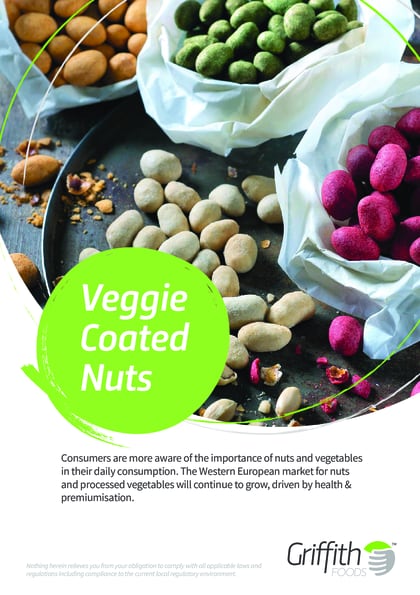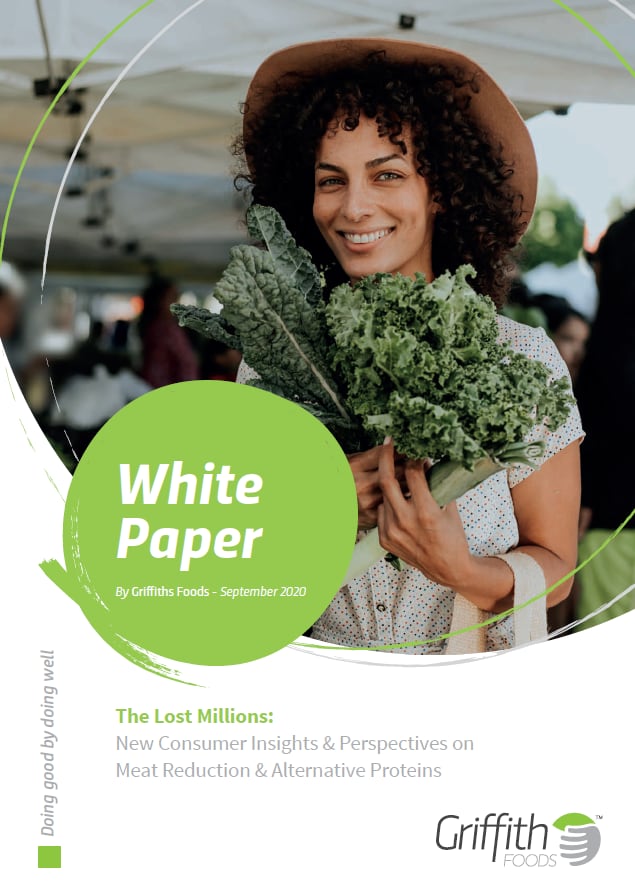Winning consumers over on flavour, texture and the nutritional quality of alternative proteins are just some of the challenges facing the burgeoning sector. As consumer demand rises, how can manufacturers continue to innovate and deliver?
People need proteins. Contained within every cell in the human body, protein is an energy source that’s essential for growth, repair and maintenance. Yet the demand for traditional meat protein is already outpacing supply. With the world population expected to rise by 1.8 billion to 9.8 billion by 20301, investing in more sustainable, alternative protein sources to feed the planet has never been more crucial.
The alternative protein market is already well established; according to a study by BCG and Blue Horizon Corporation which claims that every tenth portion of meat, eggs, dairy and seafood eaten worldwide could be made from alternative proteins by 2035, the market is expected to top US$290 billion by the same year.2 Indeed, substituting traditional protein for plant-based alternatives is already a regular habit for many consumers. Research by Ipsos revealed 58% British adults now use plant-based meat alternatives in their diet and that almost half (46%) are considering reducing their intake of animal products in the future.3
Eschewing meat in favour of alternative proteins is a lifestyle choice not just reserved for the wealthy, either. Earlier this year, Quorn and KFC announced a collaboration to roll out meat-free fast-food products across European branches of the chain, whilst meat alternatives are already permanent fixtures on menus at quick service restaurant (QSR) chains: Burger King’s Vegan Royale, a meat-free take on a chicken burger; Subway’s Plant Patty; and McDonald’s McPlant that’s billed as a ‘juicy plant-based patty’. Global household brands touting burger, fish and chicken alternatives will undoubtedly encourage consumer habits to migrate towards plant-based food products. Bloomberg Intelligence (BI) has already indicated that the alternative protein sector could make up to 7.7% of the global protein market by 2030 at a projected value of over $162 billion, up from $29.4 billion in 2020.4
While the appetite is clearly there, enticing consumers with products which are innovative, tasty and nutritious is one of the ongoing challenges faced by manufacturers. Research shows that key attributes such as taste, texture and a perceived ‘lack of naturalness’ are barriers to purchasing plant-based meats. Of those surveyed, 42% said plant-based meats simply don’t taste as good, with almost a third (32%) saying they don’t find plant-based meats appealing.5
Overcoming such challenges requires innovations within R&D, formulations and processing. With extensive R&D knowledge and over 100 years’ experience in delivering ingredient solutions to animal protein manufacturers, Griffith Foods is well placed to support both plant-based processors and animal protein manufacturers who are diversifying their portfolios into alternative protein sources, which includes plants, fermented products and cell-based meat.

Fish-free fillet plant-based mimic concept, by Griffith Foods
High performance ingredients
Drawing on its century-long experience in red meat, poultry and seafood, Griffith’s functional substrate blends are formulated specifically for alternative proteins and are designed to optimize everything from flavour and colour, to binding capabilities, texture, mouthfeel and preservation.
Specially formulated to contain all the essential elements in the correct dosage, substrate blends are supplied ready dosed and designed to be mixed with water into doughs and pastes for applications across a range of products including nuggets, patties and goujons. Launched in 2020, Griffith Foods dry-blend systems for plant-based mimics are tailored and refined to a manufacturer’s desired organoleptic profile across plant-based chicken, pork, beef and fish mimics.
In addition, each product is designed to work within a manufacturer’s existing processing line without the need for expensive upgrades or reconfigurations, which drives agility and speed to market without additional cost. “We co-develop and design a unique blend with our partners, each and every time, to meet their specific needs,” says Jaume Cirera, Market Segment Manager for Alternative Protein at Griffith Foods.
“We see the substrate blends category as the one with the biggest potential and where we expect the most innovation and movement. There will be a lot of innovation in ingredients that help deliver in terms of taste and texture of these substrates – the eating experience of these plant-based products will increasingly resemble that of meat-based products.”
“Assembling the best ingredients to design the right blend that will convince consumers to keep on buying the products and generate repeat purchase is the key challenge. We work with chefs, who translate the technical solutions into consumer appealing products, really elevating the eating experience of our offer to a culinary level. Thanks to this culinary inspiration of our chefs, we are also front runners in developing innovative plant-based concepts that will appeal future generations of consumers”.
Hosting workshops which bring together R&D teams and culinary experts are another way that Griffith inspires future prototypes and successful launches, as are food safaris, which see chefs coming together across global regions to explore upcoming trends which they can then apply in their own markets for the tastes of a particular consumer.
Sauces and dressings is another category where Griffith Foods’ chefs are constantly developing new and innovative blends that can be used in liquids, dry or in concentrated formats across a diverse range of sauces, dressings, gravies, salsas, condiments, sweet toppings and more. Meanwhile, seasonings provide the flavouring and the colour of products from rubs and marinades to glazes and internal seasonings, designed to enhance flavour, functionality, appearance and aromatics for any protein or base. And textures and coating systems offer visual, taste, textural and nutritional properties to help products stand out and keep customers coming back for more.

Beef-free hamburger plant-based mimic concept, by Griffith Foods
Testing and prototypes
Underpinning Griffith’s plant-based go-to-market strategy are expert teams across four disciplines: consumer insights which monitors, identifies and captures food trends across the globe to help partners utilise the findings; culinary chefs who draw on consumer insights and customise solutions from ideation to launch within the realities of production and the market; and food scientists and sensory experts, who work hand-in-hand to navigate the intricacies of human interaction with food to create safe, nutritious, delicious and sustainable products that give partners a greater chance of success in the market place.
“We see these taste and texture trends as global trends and we translate them to market-specific tendencies. Our partners are very much rewarded by the input of our consumer insights and sensory teams, which explore and identify sensory capabilities for local markets, giving them a greater chance to succeed in the marketplace the first time.”
Working in partnership with industrial manufacturing companies, being part of trials on prototypes in industrial lines prior to finalising samples is par for the course. “Testing the solutions and showing our partners that we create delicious, nutritious and sustainable solutions that are feasible on their existing lines is a big advantage that we offer,” says Cirera.
As the global climate crisis and environmental challenges become ever more pressing, it is hoped that more pressure will be put on corporations and governments to ease the path for alternative protein products to become ever more mainstream and successful. Undoubtedly there are still hurdles to overcome but one thing is clear – there is a raft of talent and resources to make it happen.
For more information on Griffith’s plant-based mimics visit griffithfoods.com.
References
1. United Nations: World Population Prospects 2022
2. Morach B., Witte B., Walker D., et al. Food for Thought: The Protein Transformation BCG. (2021, March).
3, 5. Ipsos, March 2022
4. Bloomberg Plant-based Foods Market to Hit $162 Billion in Next Decade, Projects Bloomberg Intelligence (2021, August).








